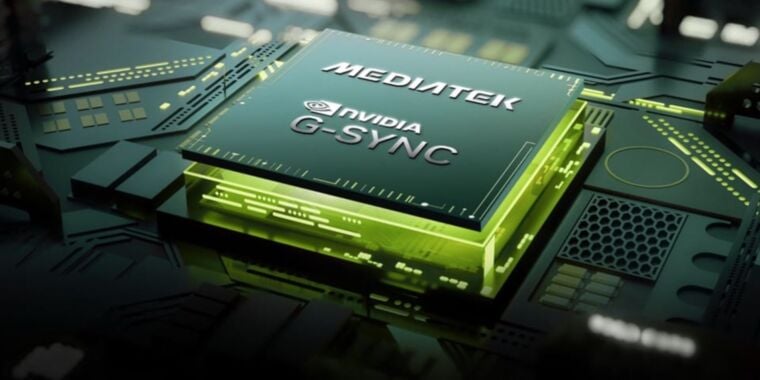Back in 2013, Nvidia introduced a new technology called G-Sync to eliminate screen tearing and stuttering effects and reduce input lag when playing PC games. The company accomplished this by tying your display’s refresh rate to the actual frame rate of the game you were playing, and similar variable refresh-rate (VRR) technology has become a mainstay even in budget monitors and TVs today.
The issue for Nvidia is that G-Sync isn’t what has been driving most of that adoption. G-Sync has always required extra dedicated hardware inside of displays, increasing the costs for both users and monitor manufacturers. The VRR technology in most low-end to mid-range screens these days is usually some version of the royalty-free AMD FreeSync or the similar VESA Adaptive-Sync standard, both of which provide G-Sync’s most important features without requiring extra hardware. Nvidia more or less acknowledged that the free-to-use, cheap-to-implement VRR technologies had won in 2019 when it announced its “G-Sync Compatible” certification tier for FreeSync monitors. The list of G-Sync Compatible screens now vastly outnumbers the list of G-Sync and G-Sync Ultimate screens.



Open standards always win. Just buy FreeSync and get an AMD GPU.
They always win, unless they don’t. History is littered with examples of the freer standard losing to the more proprietary standard, with plenty of examples going the other way, too.
Openness is an advantage in some cases, but tight control can be an advantage in some other cases.
OpenGL 😞
Obsolete by Vulkan. Which is open-source.
Up until relatively recently, it was great to see that Vulkan and DX12 were in a practically even split.
Still great to see that some of the best talent in terms of visual fideltiy showcases Vulkan, like rdr2 (originally defaulted to dx12, now vulkan), doom eternal and so on. Fully expect the next GTA to.
stadia was derp but it forced interested publishers to get acquainted with vk. I think it ended up doing more good for the industry in the end as a failure, rather than harm by succeeding and locking subscribers into such a restrictive game “ownership” paradigm.
OpenGL is a bit more complicated since it’s more than just a specification in practical terms. The documentation and tooling for OpenGL was really awful compared to Direct3D. This is a huge issue when developers are working on implementing features. For instance, the documentation for glReadPixels is incorrect for years and you would have to refer to the wiki for it instead. Yet, the only way you would know this is if you scoured the internet and happened to find a StackOverflow page asking about symptoms that may not even match your issue.
Thankfully, Vulkan seems to be a lot better in this regard but I still curse the heavens everytime I need to go back to OpenGL when supporting older hardware.
I’ll buy an AMD GPU once they have an answer to the 4090 (actually the 5090 at this point). I need AI upscaling, SDR-to-HDR conversion for videos, and way better ray tracing performance. Until that happens, my PC will unfortunately remain a mixed-breed bastard.
Not a hardware thing.
Not a hardware thing.
Ray accelerators are a hardware thing. The AI to denoise them, again, not so much.
Just because AMD cards don’t come with tensor cores doesn’t mean they can’t run AI workloads, tensor cores are essentially cut-down GPU cores. They make sense in mobile devices to save on energy consumption but on desktop? Just use the TFLOPs you have for the basic matrix math you’re doing, the important bit, and that’s the gather/scatter memory architecture to deal with giant matrices, GPUs also have.
If there are software alternatives that allow me to automatically AI upscale and convert to HDR any video I play in any program, streaming or local (and it just works automatically in everything with no effort on my part), then please share download links with me. Until then I’ll stick with Nvidia GPUs.
“Any video in any program” is not how it works for you right now, either. And if you need something, then definitely not in every program but in your video editor because you’re a professional.
As to software: I’m on Linux. You won’t get that nvidia software there, either, in Linux land everyone gets those features because they have nothing to do with what GPU you have. Well at least mpv does it all, natively or via standard plugins (also AI frame interpolation), TBH I don’t really care how firefox plays videos as long as VRR works, which it does.
Ok 0.01%
Do you honestly believe that only 0.01% of PC users have an HDR monitor? Give me a break.